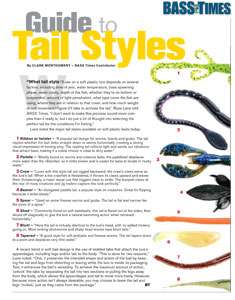
The business end of a soft plastic lure is its tail. It's the part of the bait that first attracts the attention of bass and, through its writhing, waving, fluttering, flapping or shaking, entices it to actually eat the lure.
In Bass Fishing 101, you learned that a worm or lizard with a ribbon or "twister" tail is best when the water is moderately clear, one with a paddle tail works better when it's muddy, and one with a blunt tail is best during cold fronts.
But Bassmaster Elite Series pro Russ Lane has a Ph.D. in soft plastics, and he goes beyond these basics when choosing the right tail style. Use his guidelines next time you break out the soft baits on your home lake.




